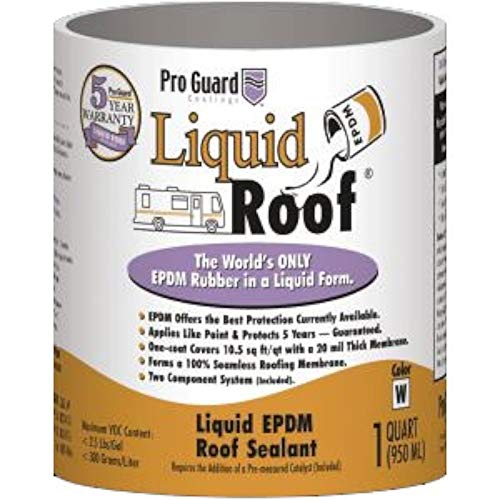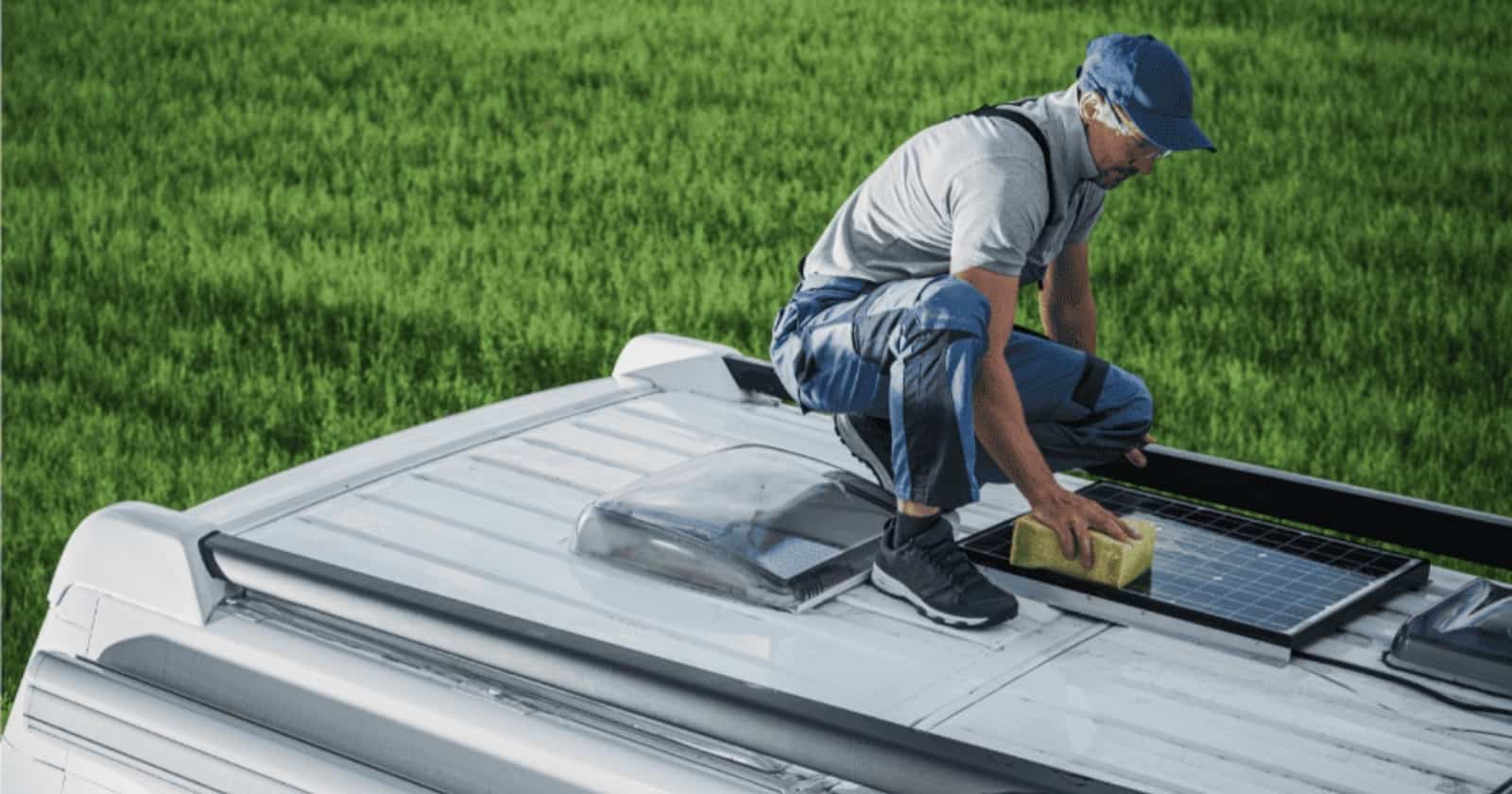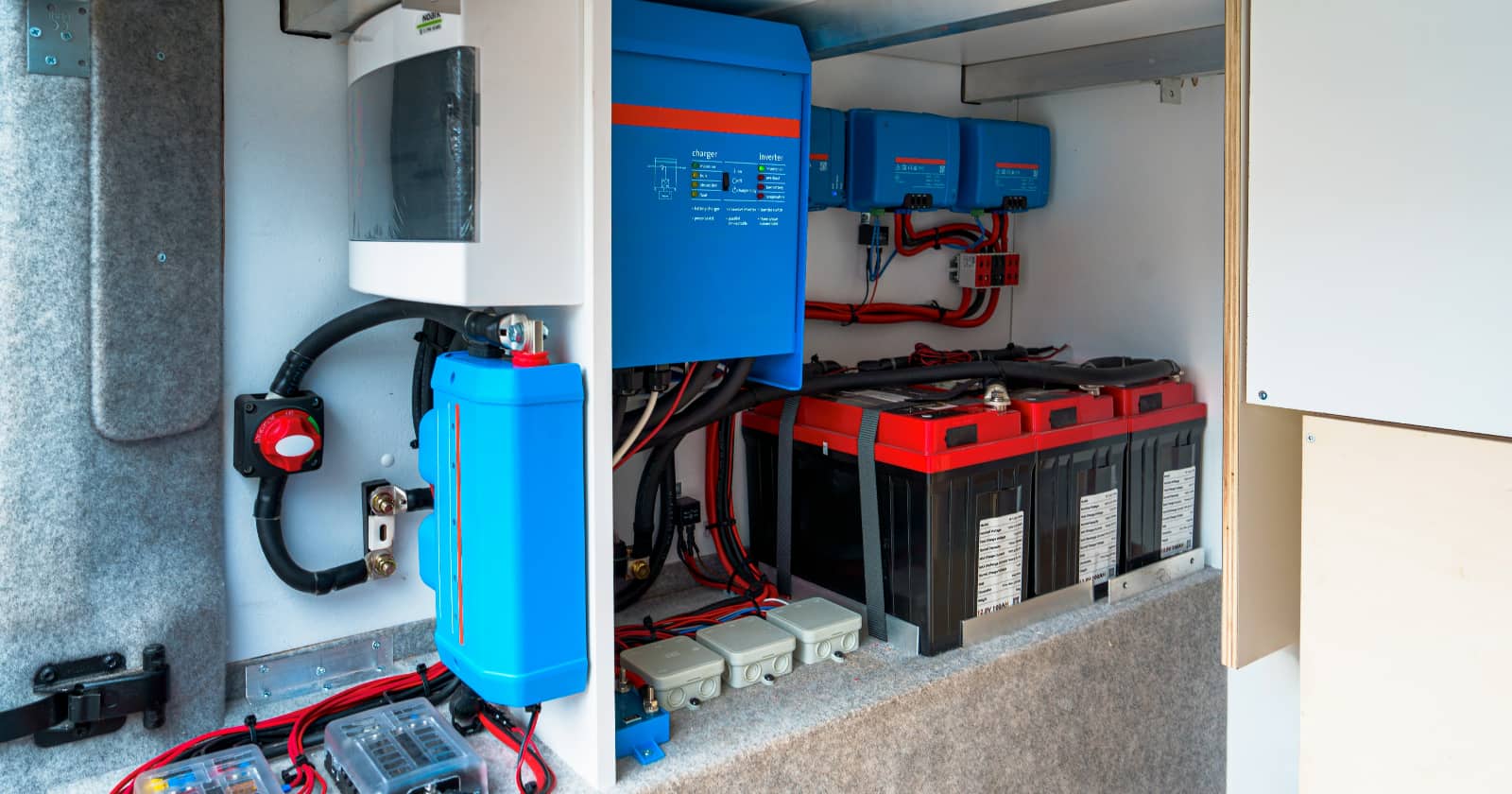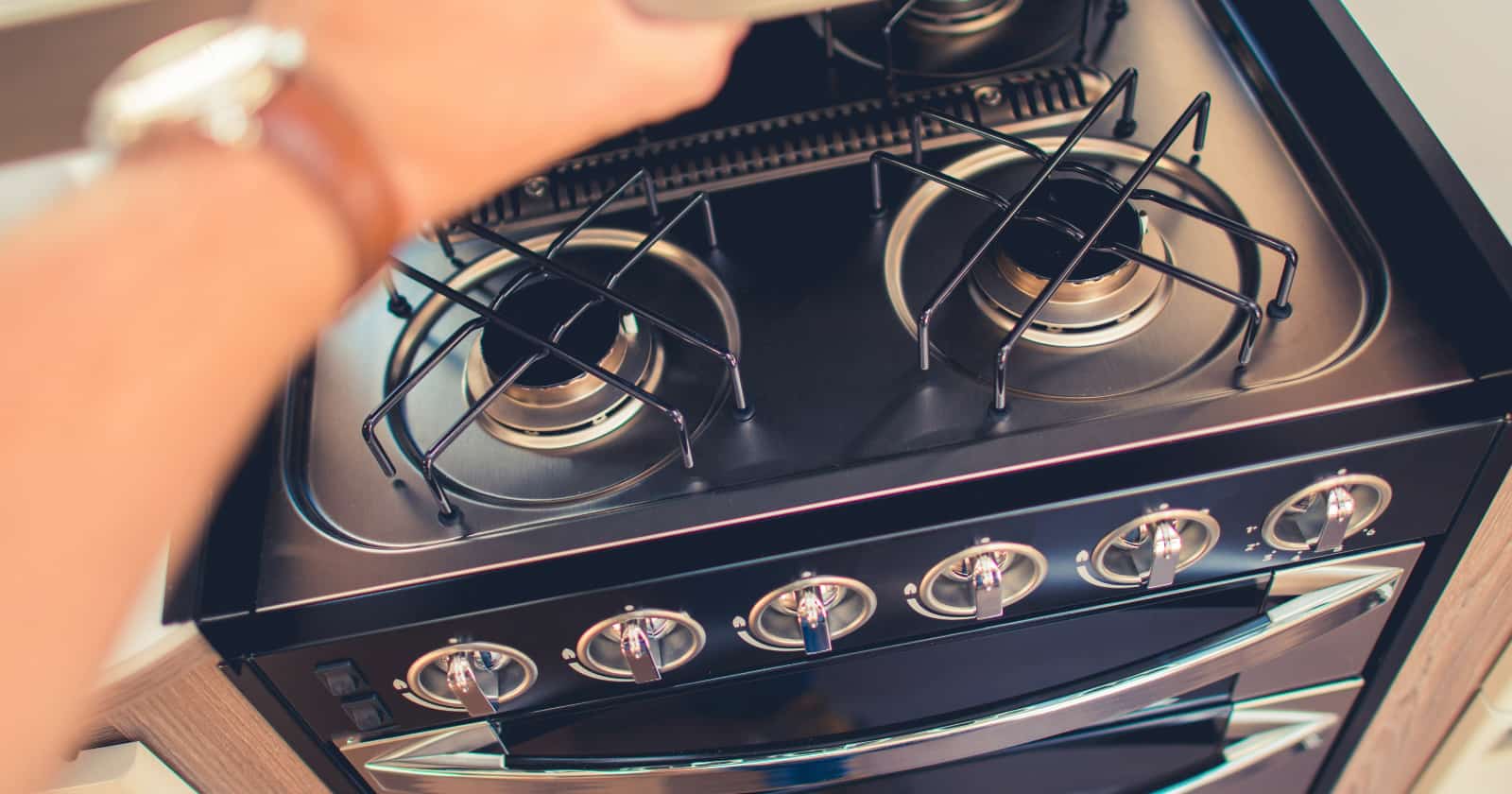Hello, fellow adventurers! If you’re reading this, chances are you’ve experienced the thrill of the open road in your trusty RV. But let’s face it, even our most beloved homes-on-wheels can encounter a few bumps along the way. Ever woken up to the unpleasant surprise of water dripping from your RV ceiling?
Or perhaps you’ve noticed some wear and tear on your roof that’s got you concerned? Fear not, because we’ve got the solution: RV roof coatings and sealants.
Just want to get to the list? Click Here!
The Many Benefits of RV Roof Coatings and Sealants
Investing in a high-quality RV roof coating or sealant is like buying an insurance policy for your RV. Here are just a few of the many benefits:
- Protect Your RV from Harmful Elements: Just like sunscreen protects your skin, a roof coating shields your RV from damaging UV rays, rain, wind, and debris.
- Address Water Leakages: Water leaks can lead to costly repairs. A good sealant can prevent leaks before they start.
- Extend the Life of Your Roof: A well-maintained roof can last for decades. A high-quality sealant or coating can help ensure your roof stands the test of time.
- Secure Roof Equipment: Sealants can also be used to secure and protect roof vents, skylights, and other equipment.
- Prevent Dirt and Dust: By sealing up any potential entry points, you can keep your RV interior clean and dust-free.
- Keep Insects Out: A well-sealed roof can help prevent pesky insects from making their way into your RV.
- Lower Energy Costs: A reflective roof coating can help keep your RV cooler in the summer, reducing the need for air conditioning.
- Boost Resale Value: A well-maintained RV with a high-quality roof coating can fetch a higher price on the resale market.
- Enhance Your Camping Experience: A leak-free, well-insulated RV makes for a more comfortable and worry-free camping experience.
- Help Avoid the 10-Year Rule: Certain RV parks prohibit long-term stays for RVs older than 10 years. However, they may make exceptions for well-maintained rigs. Therefore, maintaining the external condition of your roof is a potential solution to bypass this regulation.
Choosing the Right RV Roof Coating and Sealant
Now that we’ve established the importance of roof coatings and sealants let’s dive into the nitty-gritty. How do you choose the right product for your RV’s roof? Here are our top five picks:
1. Dicor RP-CRC-1 Rubber Roof Acrylic Coating
BEST FOR – RVs that need a complete roof reconditioning with several durable layers of protection that will last for years.
- USE: Well suited for retrofit installations; Protective barrier…
- COLOR: White hue for stylish and beautiful RV roof
- COMPATIBILITY: For EPDM and PVC use only; Use with Dicor Rubber…
- FEATURES: Coverage rate of 1 gallon per 125 sq. ft. per coat;…
- SIZE: 1 gallon
PROS:
- Made for RV rubber roofs
- Easy to apply and clean up
- UV-resistant
- High flex
- Durable against weather extremes
CONS:
- Expensive
Dicor RP-CRC-1 is an acrylic coating for RV rubber roofing that extends its lifespan while also preventing roof rumble. It’s easy to apply with a brush or roller, dries quickly, and withstands all weather conditions. Customers appreciate its ability to prevent leaks caused by shrinkage and cracks.
The issue customers mention most is the price, which can become expensive if you own a big travel trailer, fifth wheel, or motorhome, and you require several gallons to coat the roof.
2. Kool Seal KST063600-20 Elastomeric Roof Coating
BEST FOR – RVers who have any recreational vehicle that has an aluminum or fiberglass roof that needs a quick touch-up to ensure the roof protection during the next camping season.
- 10 year warranty premium Acrylic white roof coating
- Reflects heat and protects against the elements
- Renews most roofing substrates
- Elegant design and smooth finish
PROS:
- Affordable
- Protects against 90 percent of UV rays
- Mildew and algae resistant
- Good adhesion in any temperature
- Absorbs sound
CONS:
- Not for rubber roofs
- Consistency is a bit thin
The Kool Seal KST063600-20 Elastomeric Roof Coating is a cost-effective way to maintain the integrity of your RVs fiberglass or aluminum roof. Coating blocks 90% of UV rays and keeps rain, snow, dirt, and leaves out of the camper while reducing sound.
Customers appreciate this RV roof sealant’s formulation, which effectively adheres to a wide temperature range. They also value its ability to quickly clean brushes and tools while being environmentally compliant. The only downside of this product is the thin consistency, which spreads more like paint and is a bit see-through without several coats.
3. DEHCO Heng’s 16-46128-4 Coating Rubber Roof
BEST FOR – RVers looking to reseal tears or gapping seams on their camper’s rubber roof or to bring back a bright white finish to improve the appearance of their RV.
- Designed for use over RV rubber roofs, at seams and tears and to…
- It is UV resistant and expands and contracts with roofs
- Resists cracking and withstands impact, non-polluting and…
- Available in gallon size
PROS:
- UV-resistant
- Great adhesion (with proper clean/prep)
- Non-toxic, non-polluting
- Resists cracks due to high expansion
- Withstands impacts from falling debris
CONS:
- Made for RV rubber roofs only
The DEHCO Heng’S 16-46128-4 Coating Rubber Roof is an ideal choice for sealing and protecting the rubber roof of your camper.
This roof coating’s uniformity enables it to glide on effortlessly, forming a robust shield that preserves your RV’s rubber roof. Its ample expansion upon drying ensures that this rubber roof coating will not fissure or fracture, and its non-toxic composition guarantees that it is harmless to both you and the environment.
Customers find that after proper preparation of the rubber roof, the adhesion of this product was excellent. Many customers found one gallon perfect for two coats on any small travel trailer or motorhome.
On the downside, this RV roof sealant is made only for RVs with rubber roofs, which leaves many people with other types of RV roof material out of luck.
4. Proguard F99911 Liquid Roof
BEST FOR – Any RVer that needs a one-coat protective sealant or to patch a section on any RV roof surface that will last for years.
- package length:19.685 centimeters
- Package Weight: 4.513 kg
- package width:19.685 centimeters
- package height :22.86 centimeters
PROS:
- Super thick coat
- Adheres to a variety of surfaces
- Chemically-cured membrane
- The finish is easy to clean
- Seals leaks and pinholes
CONS:
- Pricey for full roof coverage
- Thick formula is a bit messy to use
The Proguard F99911 Liquid Roof is an RV roof sealant made for the stress RV travel puts on seams and roofs that move and vibrate.
Protect your rubber roofing from rain, snow, and UV rays with one application. This RV roof coating seals punctures, openings, and gaps for long-lasting results. It cleans effortlessly and works on all types of surfaces, including rubber, metal, fiberglass, acrylic, vinyl, and wood. Customers love its exceptional outcomes and shiny appearance.
The biggest issue customers encounter is the final cost to cover their camper roof. Even small RVs will need two or more gallons to achieve the proper coverage, which can become expensive as your camper gets larger.
5. Flex Seal Liquid Rubber in a Can
BEST FOR – RVers looking to seal a specific spot on their RV roof, whether that area leaks, is peeling, or needs an overall refresh.
- Flex Seal Liquid is liquid rubber in a can! Now you can brush,…
- Use anywhere you need a watertight, flexible rubberized coating
- Goes on smooth and covers fast, sealing out water, air and…
- UV-resistant
- Prevents rust and corrosion. Chemical resistant
PROS:
- Watertight, flexible coating
- UV resistant
- Non-toxic
- Resistant to mildew and chemicals
- Prevents corrosion and rust
CONS:
- Thick consistency
- Some issues with coating peeling
Flex Seal Liquid Rubber is a non-toxic, versatile RV roof sealant that has been gaining recognition for its exceptional results. Its unique formula effectively stops water penetration, resists UV rays, and prevents corrosion and rust from damaging metal RV roofs. Additionally, it can adhere to a wide range of surfaces, making it suitable for sealing any type of RV roof.
Customers appreciate the formula’s fast-acting ability to halt roof leaks, its durability in various weather conditions, and its mildew-resistant properties that maintain the RV roof’s appearance. Additionally, the coating diminishes noise and vibration.
Certain customers experienced poor adhesion of the coating, potentially resulting from inadequate surface preparation. Additionally, some customers encountered challenges working with the product’s consistency, particularly in hot, arid conditions where the sealant thickened and became difficult to apply.
FAQ About RV Roof Coatings and Sealants
How Are RV Roof Coatings and Sealants Applied?
Liquid RV roof coating is easy to apply. You can use a standard paint roller or a spray machine for an even coating. However, many beginners and perfectionists prefer to hire a professional roofer or painter.
Before applying the coating, it is important to thoroughly clean the area to ensure optimal effectiveness. Use detergent and water, being careful not to damage the roof. Let the surface dry before beginning.
Two types of RV roof coatings include acrylic-based coatings and silicone-based products. Acrylic coatings require a primer and two coats, while silicone coatings do not require a primer and can work with less reinforcement.
However, silicone coatings are usually more expensive than acrylic products. Consult the owner’s manual or the manufacturer to determine the best materials and application for your roof. For example, petroleum-based products can damage rubber roofs. One coat of liquid paint is usually enough for an EPDM rubber roof.
What are the other things you could do to protect your roof?
Prioritizing the protection of your roof from natural elements is crucial to prevent inevitable wear and tear. Luckily, there are several effective methods to protect your roof, including applying RV roof coatings and sealants.
Additionally, you can employ the following strategies:
RV roof patches: Include a roof patch or tape in your emergency repair kit for your RV. Roof patches or tape are simple to apply, provide water-resistant adhesion, and offer permanent or long-term solutions for sealing rips or tears.
RV roof covers: If you plan to camp in an area with numerous trees with falling leaves or in a location with significant amounts of dust and rain, or if you intend to store your RV outside for an extended period, investing in a high-quality RV roof cover is necessary. A roof cover can prevent the accumulation of additional moisture and protect your roof from physical damage caused by harmful debris.
Final Thoughts
Your RV isn’t just a mode of transportation—it’s your mobile haven, your cozy retreat in the great outdoors. And like any cherished space, it requires a touch of care and attention to keep it in prime condition. Investing in a top-notch roof coating or sealant is a proactive step towards shielding your RV from the elements, warding off expensive repairs, and guaranteeing many more years of joyous journeys.
So, my fellow road warriors, are you prepared to bestow your RV with the protection it merits? As the old saying goes, “An ounce of prevention is worth a pound of cure.” Here’s to safe and carefree travels!
Before you hit the road, why not share this post with your fellow RV enthusiasts? You might just save them from a future roof repair headache. Click the share button below and spread the knowledge. Safe travels, friends!
Product data was last updated on 2024-04-23 at 03:03.









